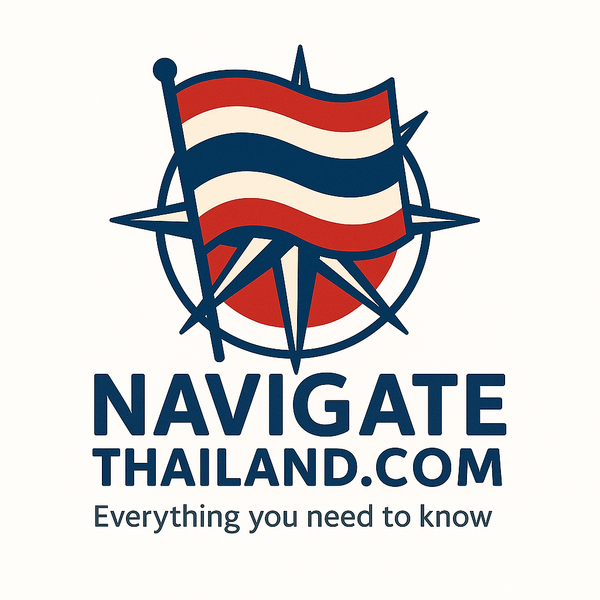
The Enigmatic Pangolin: Thailand’s Most Mysterious Mammal
Share
Hidden deep within the lush rainforests and scrublands of Thailand, a peculiar creature roams under the cover of night. Meet the pangolin, one of the most fascinating and elusive animals you can encounter in Southeast Asia. Covered head to tail in protective scales, this ancient, almost mythical mammal is shrouded in mystery. Known for its unique appearance and shy nature, the pangolin has unfortunately also become one of the most trafficked animals in the world, putting it at the centre of critical conservation efforts in Thailand and beyond.
If you’re planning a trip to Thailand and are intrigued by its incredible wildlife, understanding the pangolin’s story is a must. In this article, we’ll take you on a journey through the pangolin’s world—from its biology and behaviour to where you might (if you’re lucky) catch a glimpse of this creature in the wild. We’ll also cover the darker side of its tale, focusing on conservation and what travellers can do to help protect this endangered species.
What Is a Pangolin?
The pangolin, often nicknamed the “scaly anteater,” is a mammal unlike any other. It is the only mammal covered in tough, overlapping scales, which are made of keratin—the same substance as human fingernails. There are eight species of pangolins worldwide, with two species found in Thailand: the Sunda pangolin (Manis javanica) and the Chinese pangolin (Manis pentadactyla). Both are critically endangered due to illegal poaching and habitat loss.
The Sunda pangolin is primarily found in the lowland forests of Thailand, while the Chinese pangolin tends to inhabit the northern regions near the border with Laos. These solitary creatures are nocturnal, spending their nights hunting for ants and termites using their long, sticky tongues, and their days curled up in burrows or high in the treetops.
Fun Fact: A pangolin’s tongue can be longer than its body when fully extended! It uses this incredible tool to reach deep into insect nests.
The Pangolin’s Unique Adaptations
Pangolins have evolved a range of fascinating adaptations that make them perfectly suited to their insectivorous diet and reclusive lifestyle.
1. Armour-Like Scales: The scales of a pangolin are its most distinctive feature, providing it with protection against predators. When threatened, a pangolin will curl into a tight ball, leaving only its hard scales exposed. This defensive behaviour makes it nearly impossible for predators, such as leopards or tigers, to get a grip.
2. Extraordinary Tongue: The pangolin’s tongue is a marvel of evolution. It can extend up to 40 centimetres (15 inches) and is covered in sticky saliva, perfect for trapping ants and termites. This makes the pangolin a highly efficient pest controller in its natural habitat.
3. Powerful Claws: Equipped with strong, curved claws, pangolins can tear open termite mounds and ant hills with ease. These claws are also used for digging burrows, where pangolins retreat during the day to rest.
Fun Fact: Despite their reptilian appearance, pangolins are mammals, more closely related to carnivores like bears and cats than to reptiles.
The Cultural Significance of Pangolins in Thailand
In Thai folklore, the pangolin is seen as a mysterious and almost mythical creature. Due to its shy nature and rare sightings, it has often been associated with mystical powers and is considered a symbol of resilience. In some rural Thai communities, it is believed that pangolins possess protective qualities, and their scales were once used in traditional medicine—a practice that, unfortunately, has contributed to their decline.
The demand for pangolin scales, driven by traditional medicine practices in parts of Asia, has led to the illegal poaching and trafficking of these creatures, despite the fact that there is no scientific evidence supporting the medicinal benefits of pangolin scales.
Important Note for Travellers: Purchasing products made from pangolin parts is illegal in Thailand and across the globe. Even if offered such items, it is important to refuse and report the seller to local authorities or wildlife conservation organisations.
Where to Spot Pangolins in Thailand
Spotting a pangolin in the wild is a rare but unforgettable experience. Due to their nocturnal habits and dwindling numbers, encountering a pangolin requires patience, luck, and a bit of insider knowledge.
1. Khao Sok National Park: Located in southern Thailand, Khao Sok is one of the oldest rainforests in the world. It offers a chance to encounter the Sunda pangolin, especially during night safaris guided by local experts.
2. Kaeng Krachan National Park: This park, near the border with Myanmar, is Thailand’s largest national park and a critical habitat for the Chinese pangolin. It’s a hotspot for wildlife enthusiasts and offers guided night tours where pangolin sightings are sometimes reported.
3. Phu Khieo Wildlife Sanctuary: In the northern region of Thailand, this sanctuary is known for its biodiversity and is a part of the larger Western Forest Complex, which is a key area for pangolin conservation efforts.
Pro Tip for Wildlife Enthusiasts: Book guided night walks or safaris with reputable ecotourism providers who follow ethical guidelines. This increases your chances of spotting nocturnal wildlife while ensuring minimal disturbance to their natural behaviour.
The Threat of Illegal Wildlife Trade
Pangolins are the world’s most trafficked mammal. Despite international protections under the Convention on International Trade in Endangered Species (CITES), illegal poaching and trafficking continue to pose a serious threat to their survival. In Thailand, pangolins are protected under the Wildlife Preservation and Protection Act, which prohibits hunting, trading, and possession of pangolins or their parts.
The primary driver of pangolin trafficking is the high demand for their scales in traditional medicine markets, particularly in China and Vietnam. The scales are falsely believed to have healing properties, such as boosting lactation, treating arthritis, and detoxifying the body.
Conservation Efforts: The Thai government, alongside organisations like WWF Thailand and the Wildlife Friends Foundation Thailand (WFFT), is working tirelessly to combat poaching and illegal trade. Anti-poaching patrols, rehabilitation centres, and public awareness campaigns are key components of these efforts.
How Travellers Can Help Protect Pangolins
As a traveller, you have a unique opportunity to contribute to the protection of pangolins. Here’s how:
1. Choose Ethical Wildlife Tours: Only support tours that prioritise conservation and respect wildlife. Avoid any attractions that allow direct contact with animals or sell wildlife products.
2. Say No to Illegal Products: Be vigilant and report any instances of wildlife trafficking. If you see pangolin scales or products being sold, notify local authorities or conservation organisations.
3. Spread Awareness: Use your platform to educate others about the plight of pangolins. The more people understand the issues facing these creatures, the more we can collectively fight for their survival.
Did You Know? Pangolins play a crucial ecological role by controlling insect populations. A single pangolin can consume over 70 million insects annually, making them vital for forest health.
The Future of Pangolins in Thailand
While the road ahead is challenging, there is hope for pangolins. Conservation initiatives are gaining momentum, and awareness of the pangolin’s plight is spreading. Thailand’s commitment to enforcing wildlife protection laws and the growing interest in sustainable tourism offer a chance for these remarkable creatures to survive and, hopefully, thrive.
The future of pangolins in Thailand depends not only on local efforts but also on global cooperation. By supporting conservation programs and making conscious choices as travellers, we can help ensure that future generations have the opportunity to witness these incredible animals in the wild.
Conclusion
The pangolin’s story is one of survival against the odds. From their unique biology and ancient lineage to the threats they face today, pangolins are a true testament to nature’s creativity. As you plan your travels to Thailand, take the time to learn about these remarkable creatures, and consider supporting efforts to protect them.
If you’ve had the chance to spot a pangolin in the wild or want to share your thoughts on this fascinating mammal, drop a comment below. Share this blog with your travel buddies and fellow wildlife enthusiasts to spread the word about the pangolin’s plight. And don’t forget to check out our YouTube channel, where the most popular blogs of the week are transformed into captivating video stories.
Let’s work together to make sure the pangolin’s scales remain only on their backs, where they belong.
References
1. WWF Thailand – Pangolin Conservation Efforts
2. Wildlife Friends Foundation Thailand (WFFT)
3. Encyclopaedia Britannica – Pangolin Biology and Ecology
4. Convention on International Trade in Endangered Species (CITES)
5. Tourism Authority of Thailand – Wildlife Tourism Guidelines
Enjoy exploring Thailand’s rich biodiversity and remember: travel consciously, leave no trace, and be a voice for the voiceless.
Read more of our Thailand blog series:
Thai Food Guide:Traditional Recipes and Street Eats
Everything Travellers Need to know
Thailand travel ebooks and language guides
Thailand Travel Apparel & Souvenir Gifts
Subscribe to our YouTube channel Navigate Thailand to see our most popular Thailand travel blogs turned into videos:


















































































































































